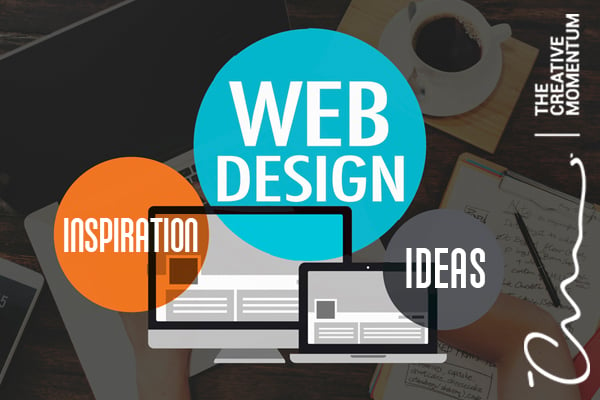A Comprehensive Guide to Ideal Practices in Internet Style for Enhanced Customer Experience
In the world of website design, understanding customer requirements is vital for developing reliable digital experiences. A well-structured approach that stresses receptive design, user-friendly navigation, and a solid aesthetic pecking order can considerably enhance customer engagement. Furthermore, optimizing page load speed is critical in conference and exceeding individual assumptions. As we discover these ideal techniques, it comes to be apparent that each aspect plays a crucial function in the general customer experience. The concern stays: what certain methods can be carried out to make certain these concepts are flawlessly incorporated right into your style process?
Comprehending Individual Needs
Recognizing individual needs is basic to efficient web design, as it directly influences individual experience and interaction. A comprehensive understanding of target audiences permits developers to develop web sites that reverberate with users, cultivating a feeling of link and fulfillment.

Relevance of Responsive Layout
Receptive layout is essential in today's digital landscape, where users access sites across a myriad of gadgets with varying display sizes. As mobile gadget usage continues to rise, guaranteeing that a site offers an optimal watching experience on smart devices, tablet computers, and desktop computers is necessary. A responsive style adapts the layout and web content based upon the individual's tool, permitting smooth navigation and readability.
Furthermore, responsive layout substantially affects search engine optimization (SEO) Internet search engine, such as Google, prioritize mobile-friendly sites in their ranking algorithms. A receptive website can boost exposure, leading to enhanced website traffic and individual involvement. Furthermore, a consistent individual experience across gadgets builds brand trustworthiness and promotes user commitment.
Moreover, executing receptive layout can result in lowered advancement and upkeep costs. Rather than producing numerous versions of a web site for numerous gadgets, a single receptive site enhances updates and material management. This effectiveness not just conserves time but also makes sure that customers obtain one of the most current info no matter how they access the site.
Simplifying Navigation

To attain streamlined navigating, web designers need to focus on a rational hierarchy of content. Making use of detailed labels for menu things can aid users recognize the objective of each area at a glance. Additionally, reducing the number of food selection products minimizes cognitive load, enabling individuals to focus on the most important aspects of the website.
Including a search function is also valuable, as it gives customers with a direct course to particular web content. Eventually, streamlined navigation not only boosts individual contentment yet also adds to achieving broader business goals by increasing conversion rates and reducing bounce rates.
Enhancing Visual Hierarchy
How can designers develop an aesthetic power structure that overviews individuals with content perfectly? recommended you read The answer depends on the strategic use design components that route interest and help with comprehension - Web design agency. Developing a clear aesthetic pecking order begins with the effective application of dimension, shade, and contrast. Larger elements normally draw the eye, making them optimal for headlines and vital messages. Including a constant color scheme can better improve focus, as different colors highlight important information while keeping a cohesive aesthetic.
Moreover, the use of whitespace is vital in producing breathing area around material. This not only stops overwhelming the individual yet also stresses important aspects, making them stand apart. Typography additionally plays a considerable duty; employing differing typeface weights and styles can set apart between main and second information effectively.
In enhancement to these techniques, visual signs such as arrowheads or icons can assist customers through the interface, enhancing the desired flow of info. By attentively incorporating these elements, designers can produce an engaging aesthetic power structure that enhances user experience, making sure that essential material is easily available and understood. This cautious orchestration of style aspects inevitably cultivates an extra instinctive communication with the internet site.
Maximizing Web Page Load Rate
In the busy electronic landscape, maximizing web page lots rate has ended up being a critical element in user fulfillment and retention. Research study suggests that individuals anticipate web pages to load within two secs; any kind of hold-up beyond this helpful hints threshold can lead to increased bounce prices and lowered conversion chances.
To improve tons speed, start by minimizing HTTP demands, as each request contributes to the filling time. Make use of methods such as CSS sprites to integrate multiple photos right into one, lowering the variety of requests. Optimizing images via compression and the use of modern-day styles like WebP can significantly lower file dimensions without compromising top quality.
Implementing browser caching likewise plays a crucial role in enhancing web page rate. By saving frequently accessed files locally on an individual's gadget, succeeding brows through can fill almost instantaneously. Furthermore, think about leveraging Web content Delivery Networks (CDNs) to disperse material closer to customers, decreasing latency.
Verdict
In verdict, efficient web style prioritizes customer needs via meticulous study, promoting intuitive and receptive user interfaces. Eventually, a dedication to these concepts is important for creating successful electronic experiences that meet the progressing assumptions of individuals in an affordable index on the internet landscape.